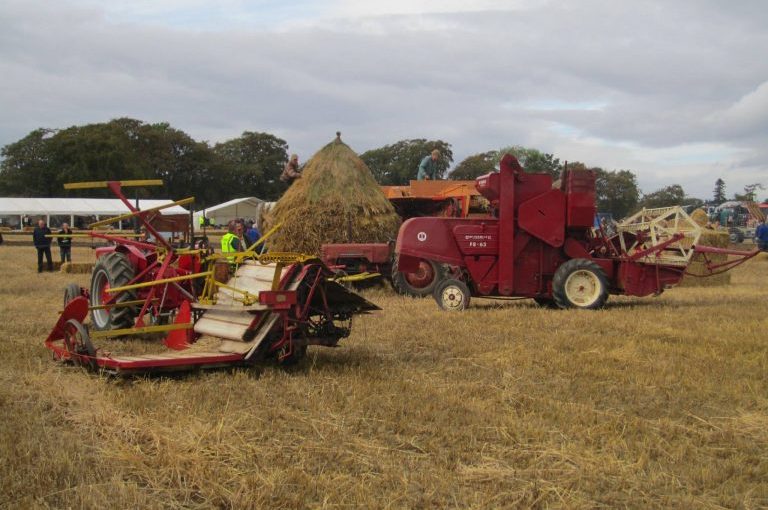The newspapers used to report detailed accounts of the progress of the harvest. These included the state of the grain, the condition in which it was secured, the number of workers or “hands” employed, the slowness or the speed in which the crop was secured. A number of accounts also report changes in harvesting methods and the introduction of new technologies. In 1927 they included the use of the Combine Harvester in western Canada. In 1945 they record the extent to which the new Combine Harvest technology was spreading in Scotland. Although numbers were still small (though they were growing), there were said to be “many combines in use”. Accounts from these two years provide interesting insights into the harvesting season and the spread of the use of combine harvesters.
From The Scotsman, 21 October 1927
The protracted harvest
The harvest is pretty well over in the lower districts of Scotland, but much grain is still lying out in the higher districts. A good deal of damage has been done to the grain generally; the amount can hardly yet be computed, as much will depend on the weather for the drying of the stacks. Very little threshing has been done yet, as farmers are anxious to get on with potato lifting. The season is late, and the danger of frost for the potatoes is keeping farmers working busily with the harvesting of the tubers. So far as threshing has gone, the results show great variation in quality. The grain that was secured under good condition is bringing satisfactory prices, but a great proportion of the grain is now coming to the market is damp and of inferior order.
New harvesting methods
New methods of harvesting which were tried for the first time in various points in Western Canada during last month have aroused keen interest among agriculturists. These new methods included the use of the Combine Harvester, a new piece of machinery which is about as revolutionary in its effects on grain harvesting (states a correspondent) as was the invention of the self-binder in contrast with the old cradle and hand-binding system. With this new machine the wheat, in one operation, is cut, threshed, and loaded for transport. The invention secures also the elimination of binder twine. Twine costs about 15 cents (7 1/2d) per lb, and it takes two pounds to bind per acre. For every section (one square mile) under wheat the cost works out at over £38 for twine alone. From the framer’s point of view, the chief advantage is the greatly reduced cost of harvesting. Our correspondent has just visited farming districts where wheat has been harvested and delivered to the elevators at a cost of 3 cents (1 1/2d) per bushel, this is in striking contrast with general methods, which entail a cost of 20 o 30 cents (10d to 1s 3d) a bushel. If such a saving could be brought about generally, it would mean at last $100,000,000 (£29,000,000) in lower harvesting costs for the benefit of Canadian farmers.
From The Scotsman, 7 September 1945:
Many combines in use
Combine harvesters have been extensively used this season-between 30 and 40 have been at work in Berwickshire-and have greatly facilitated harvesting operations. On higher ground in several counties considerable areas have yet to be cut, but if the weather remains favourable for a week or ten days more the cutting should be about completed. Says an Aberdeenshire farmer, referring to the crops in his area, “If we get another week or two of good weather we shall have one of the best harvests we have ever had.”
This may not be the experience everywhere. In Moray the crops are described as good; cutting is almost finished, and a proportion of the crop has been stacked. “Generally good” is the description given to the crops in Perthshire, but some of those in higher districts are light, especially on land severely cultivated during the way years. In Fife, wheat “is a little lighter” than usual, with barley and oats “above the average”. The yield of grain in Berwickshire “looks as if it would be heavier than last year”.
